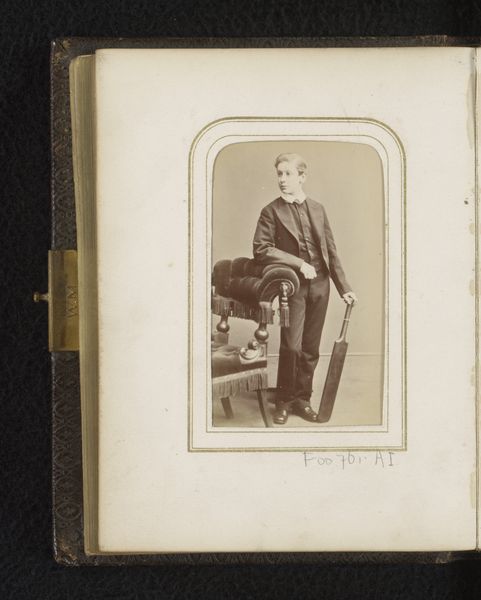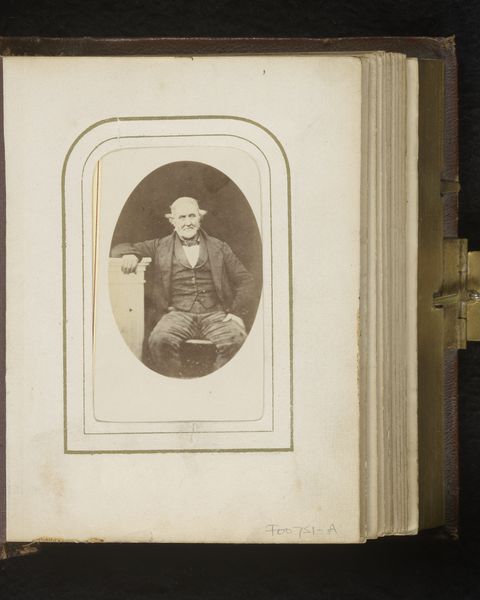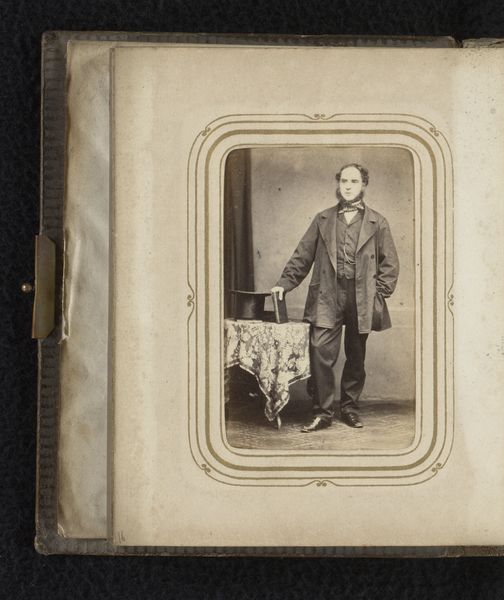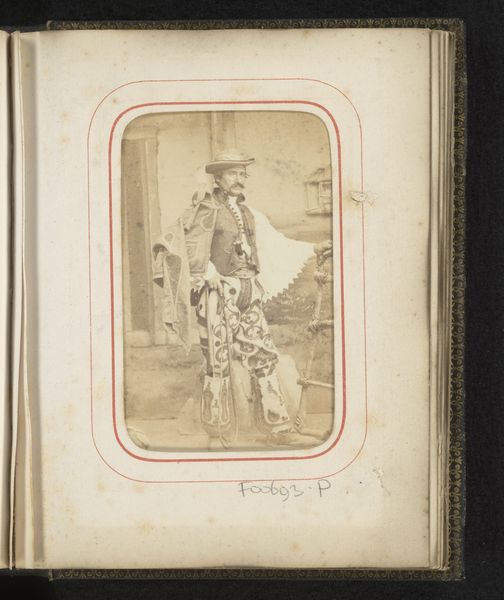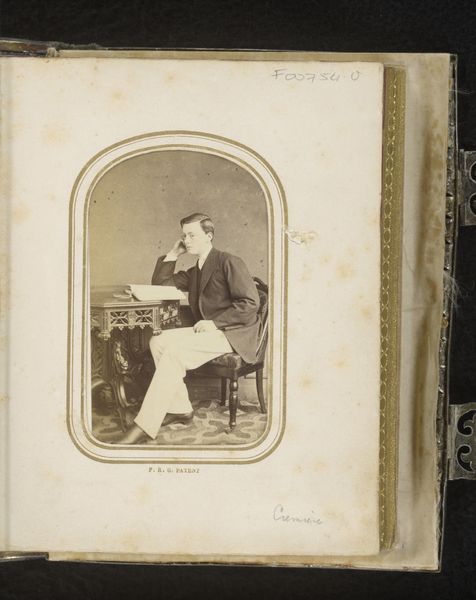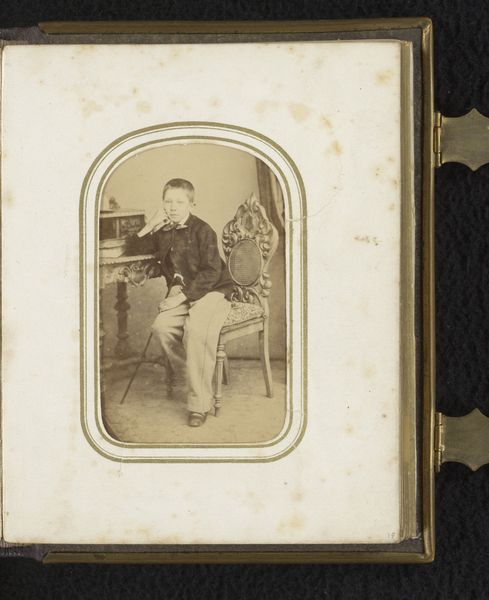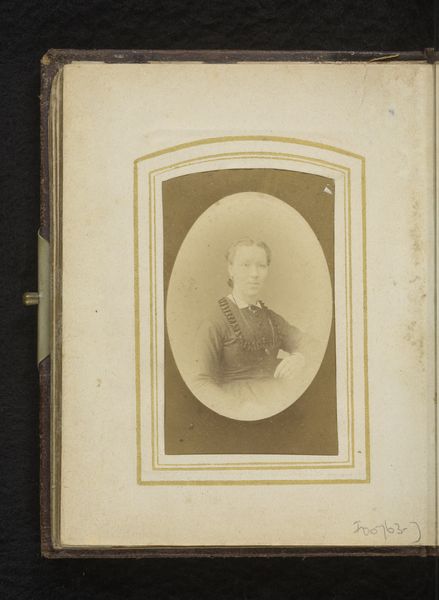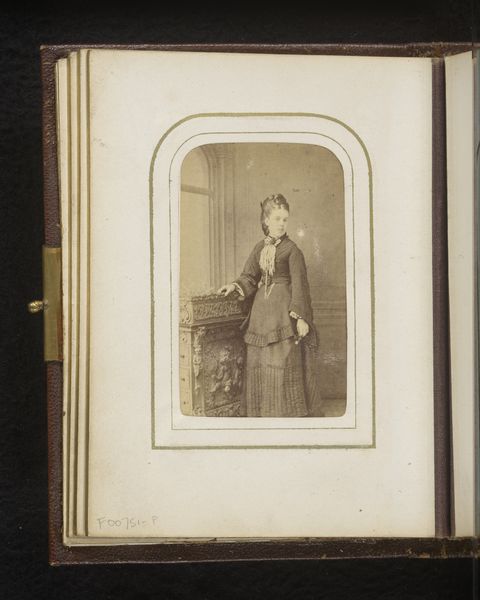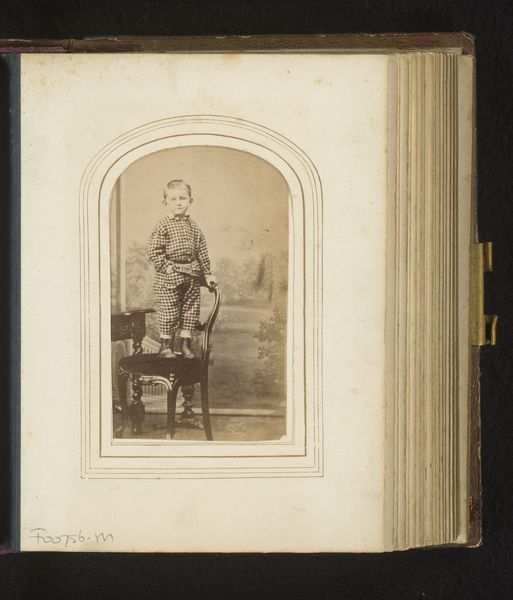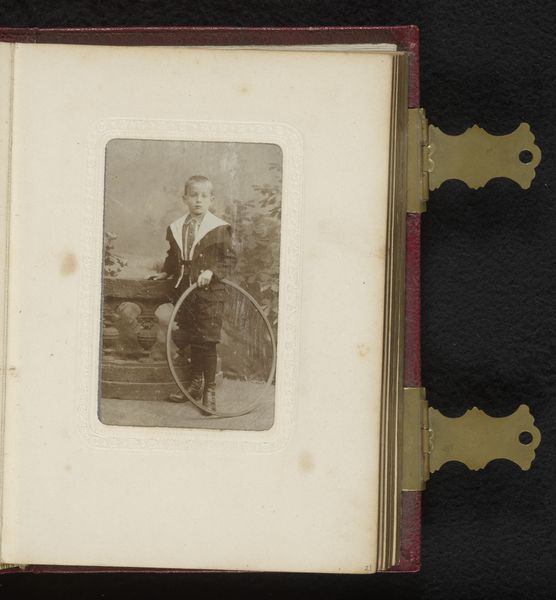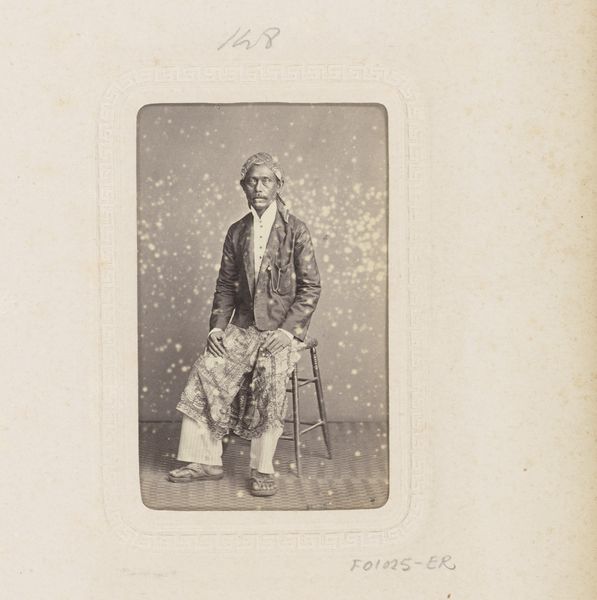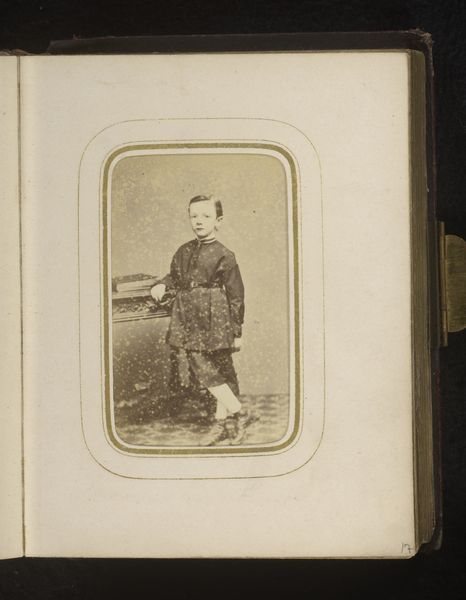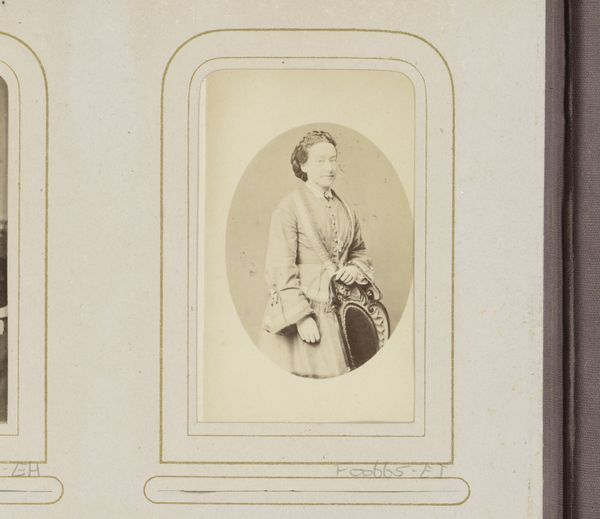
Portret van een man in Roemeense klederdracht bij een tafel 1870 - 1890
0:00
0:00
carolpoppdeszathmari
Rijksmuseum
#
table
#
aged paper
#
toned paper
#
book binding
#
homemade paper
#
paper non-digital material
#
ink paper printed
#
sketch book
#
personal sketchbook
#
sketchbook drawing
#
sketchbook art
Dimensions: height 85 mm, width 52 mm
Copyright: Rijks Museum: Open Domain
Curator: This fascinating photograph is entitled "Portret van een man in Roemeense klederdracht bij een tafel," or "Portrait of a man in Romanian folk costume by a table," created between 1870 and 1890 by Carol Popp de Szathmari. Editor: My immediate impression is one of quiet dignity, even in its somewhat faded state. The composition is very formal; it feels like a staged encounter. The way the sepia tones render the texture of the clothing is striking. Curator: Yes, the material choices contribute significantly. This is an albumen print, pasted into a personal sketchbook. It speaks to Szathmari's photographic practice; we are getting a peek at how his art was made, collected, and presented. The use of this particular photographic paper impacts how we view it over time. Editor: Absolutely, and beyond the physical degradation, I find it revealing to see this figure—likely part of Szathmari's documentation of Romanian social classes—presented within the very intimate context of the artist's sketchbook. The formal presentation challenges how identity and representation were being formed and disseminated in Romania at this time. This is further complicated by the lack of identifying text regarding who this man may have been. Curator: Considering the historical moment and Szathmari’s known involvement documenting military and social life, we can also assume some sort of commercial endeavor connected to a culture of travel. Editor: The folk costume, the tools around the man – what's being represented, how it's produced, and ultimately, how that's tied to both national identity, social positioning, and economic consumption: these aspects demand consideration. Curator: For me, what remains compelling is that this image allows an intimate engagement into what informed his larger scale commissioned works. The image begins to function on several material levels, and the context really informs that. Editor: Yes, looking closely lets us grapple with questions of cultural identity, agency, and representation while remaining anchored to the rich material history that frames this work.
Comments
No comments
Be the first to comment and join the conversation on the ultimate creative platform.
